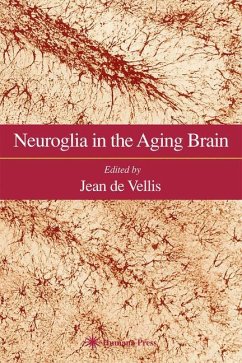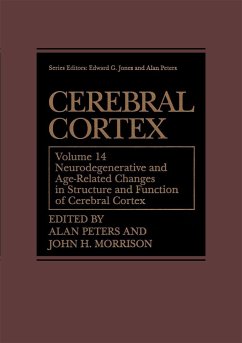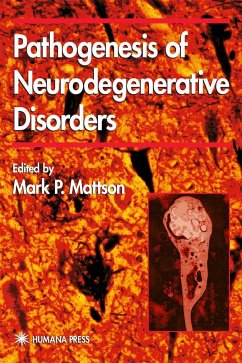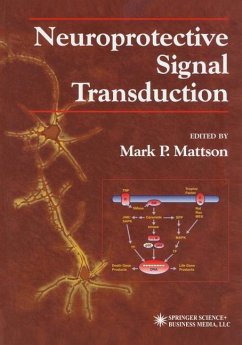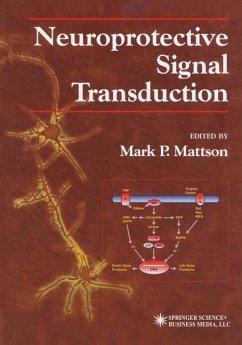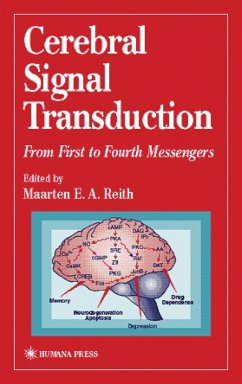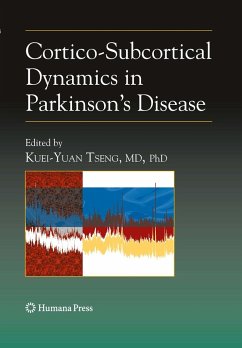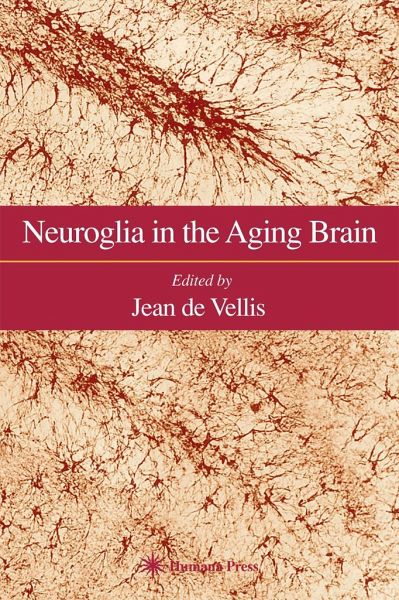
Neuroglia in the Aging Brain

PAYBACK Punkte
104 °P sammeln!
A distinguished panel of internationally recognized neuroscientists comprehensively review the involvement of and changes in glial cells both during the normal aging process and in the major disorders of old age. Topics range from the cellular and molecular changes that occur with aging-especially aging-associated activation of astrocytes and microglia and its relation to neuronal injury and repair-to neuron-glia intercommunication. The contributors show how glial signals may be modulated by hormones, growth factors, neurotransmitters, intracellular metabolism, and intercellular exchanges, as ...
A distinguished panel of internationally recognized neuroscientists comprehensively review the involvement of and changes in glial cells both during the normal aging process and in the major disorders of old age. Topics range from the cellular and molecular changes that occur with aging-especially aging-associated activation of astrocytes and microglia and its relation to neuronal injury and repair-to neuron-glia intercommunication. The contributors show how glial signals may be modulated by hormones, growth factors, neurotransmitters, intracellular metabolism, and intercellular exchanges, as well as by aging of the blood-brain barrier. With the proportion of the aged in the population rapidly increasing, especially those 80 and beyond, it has become imperative to understand not only how to prevent and treat the disabilities and diseases of old age, and to prolong and improve functional ability. The biology of neuroglia has thus emerged as one of the most exciting research areas in the neurosciences. In Neuroglia in the Aging Brain, Jean de Vellis and a distinguished panel of internationally recognized neuroscientists comprehensively review the involvement of and changes in glial cells both during the normal aging process and in the major disorders of old age. Topics range from the cellular and molecular changes that occur with aging-especially aging-associated gliosis in astrocytes and its relation to neuronal injury and repair-to neuron-glia intercommunication. The contributors show how glial signals may be modulated by hormones, growth factors, neurotransmitters, intracellular metabolism, and intercellular exchanges, as well as by aging of the blood-brain barrier. Also discussed is the role of the neuroglia, especially of the astrocytes and microglia, in the etiology of several neurodegenerative diseases, as well as the possibilities for therapeutic interventions in glial responses, and indirectly on neurons.
Illuminating and multidisciplinary, Neuroglia in the Aging Brain provides today's neuroscientists and neuropathologists with powerful new insights into how glial cells are involved in the pathogenesis of major aging disorders and how they may be used therapeutically to encourage neuronal self-renewal.
Illuminating and multidisciplinary, Neuroglia in the Aging Brain provides today's neuroscientists and neuropathologists with powerful new insights into how glial cells are involved in the pathogenesis of major aging disorders and how they may be used therapeutically to encourage neuronal self-renewal.





